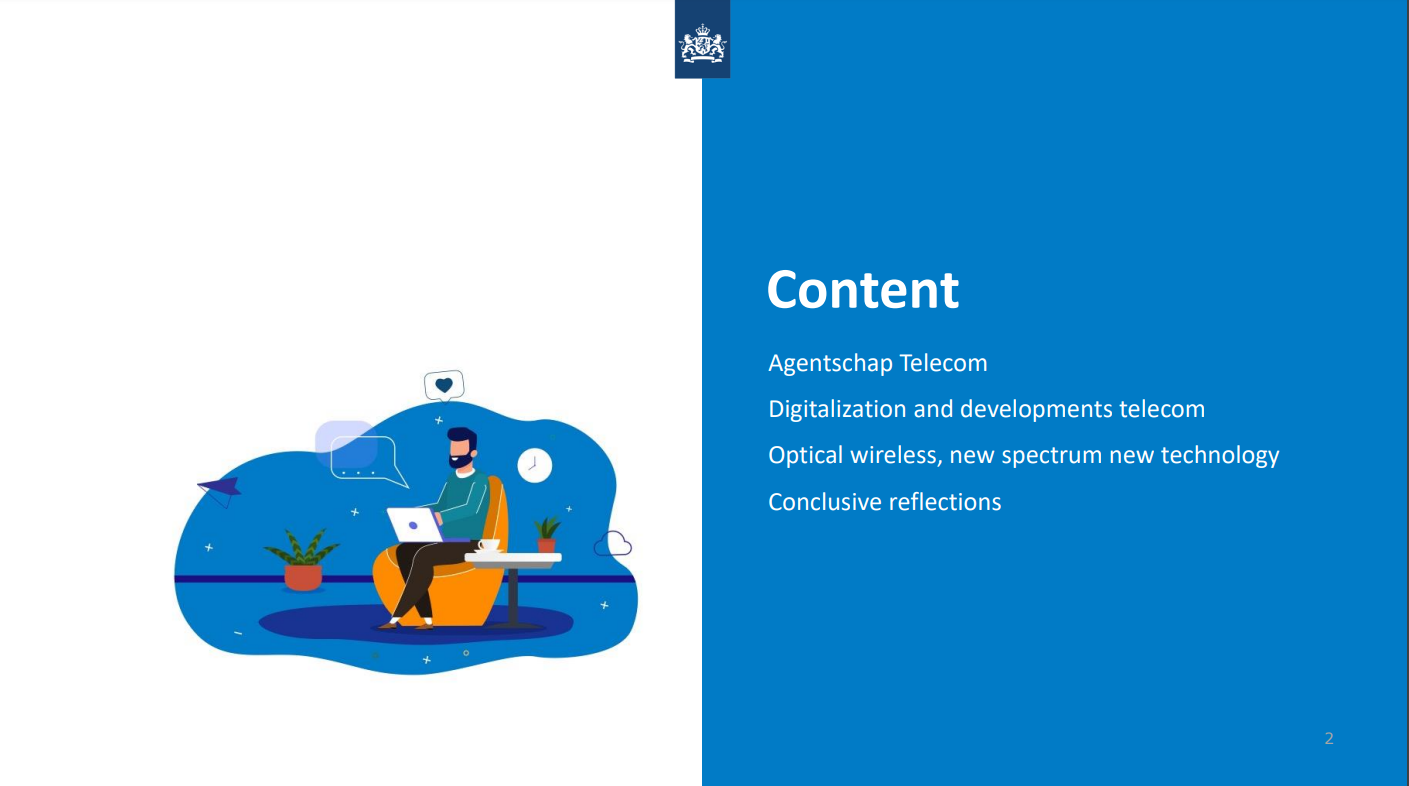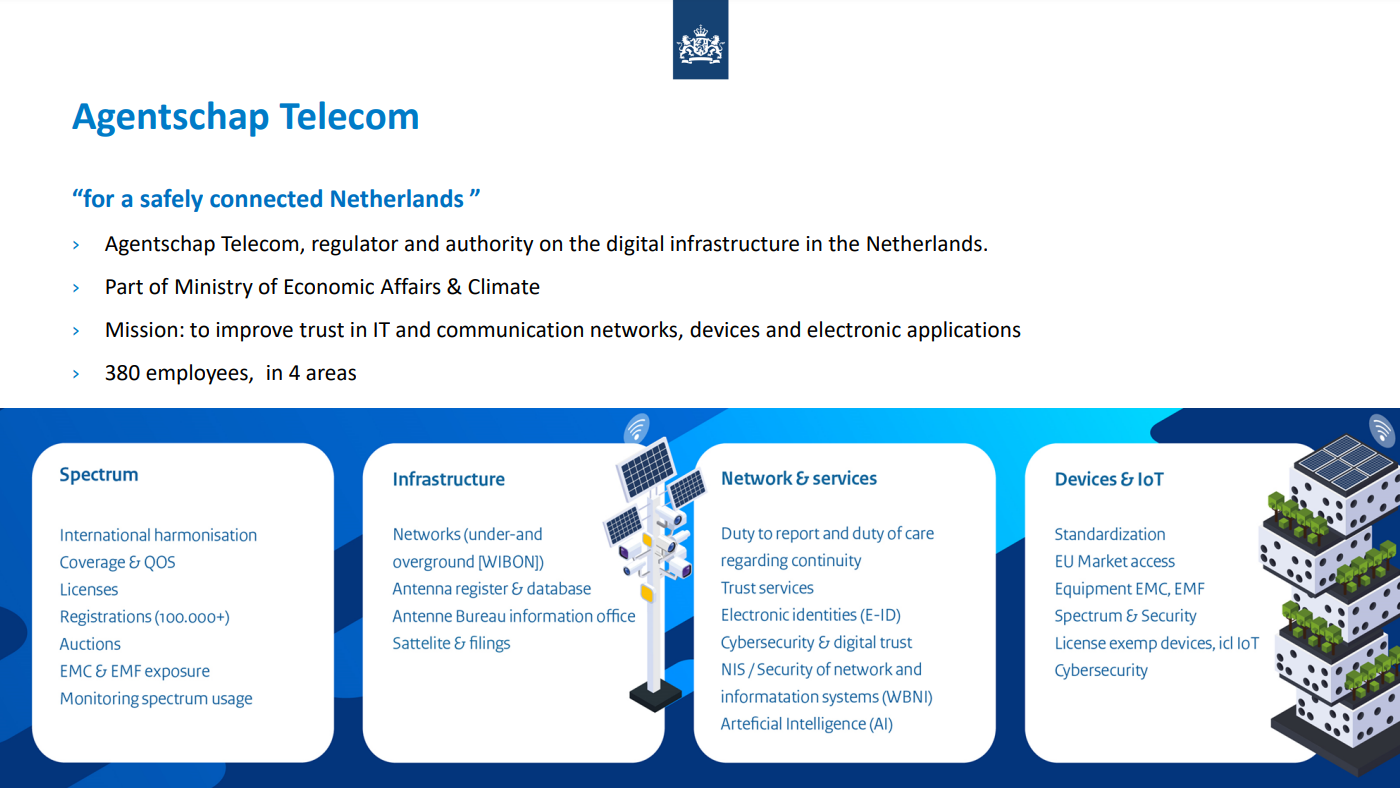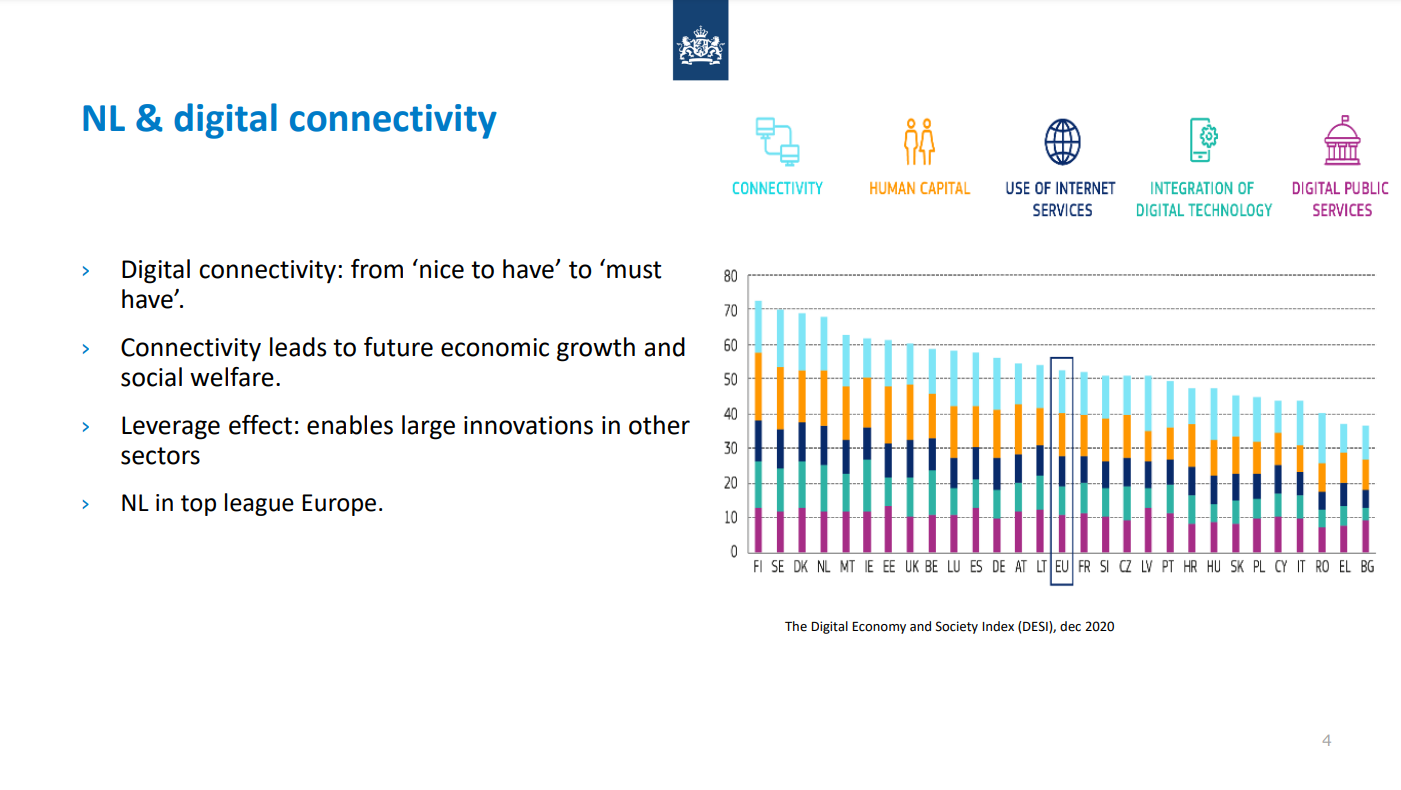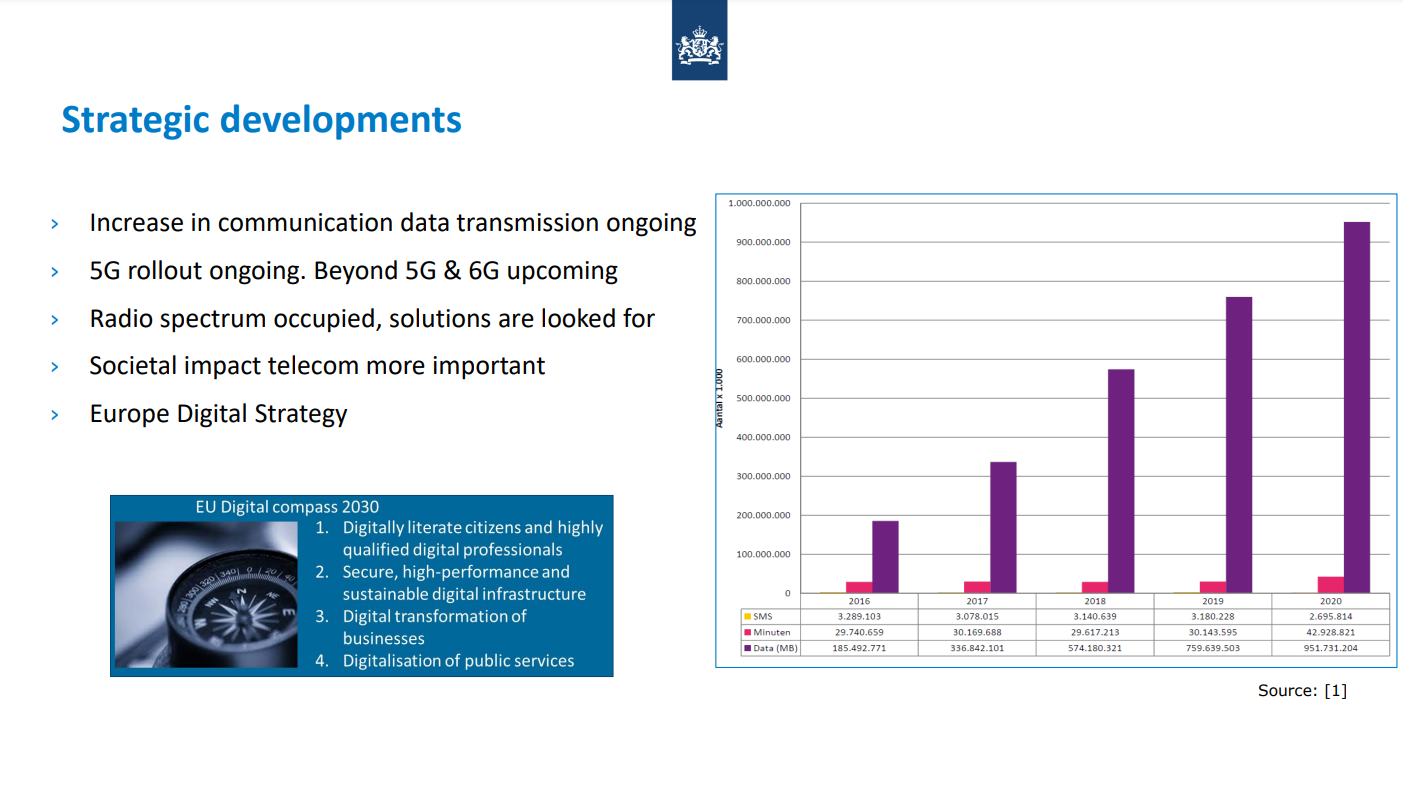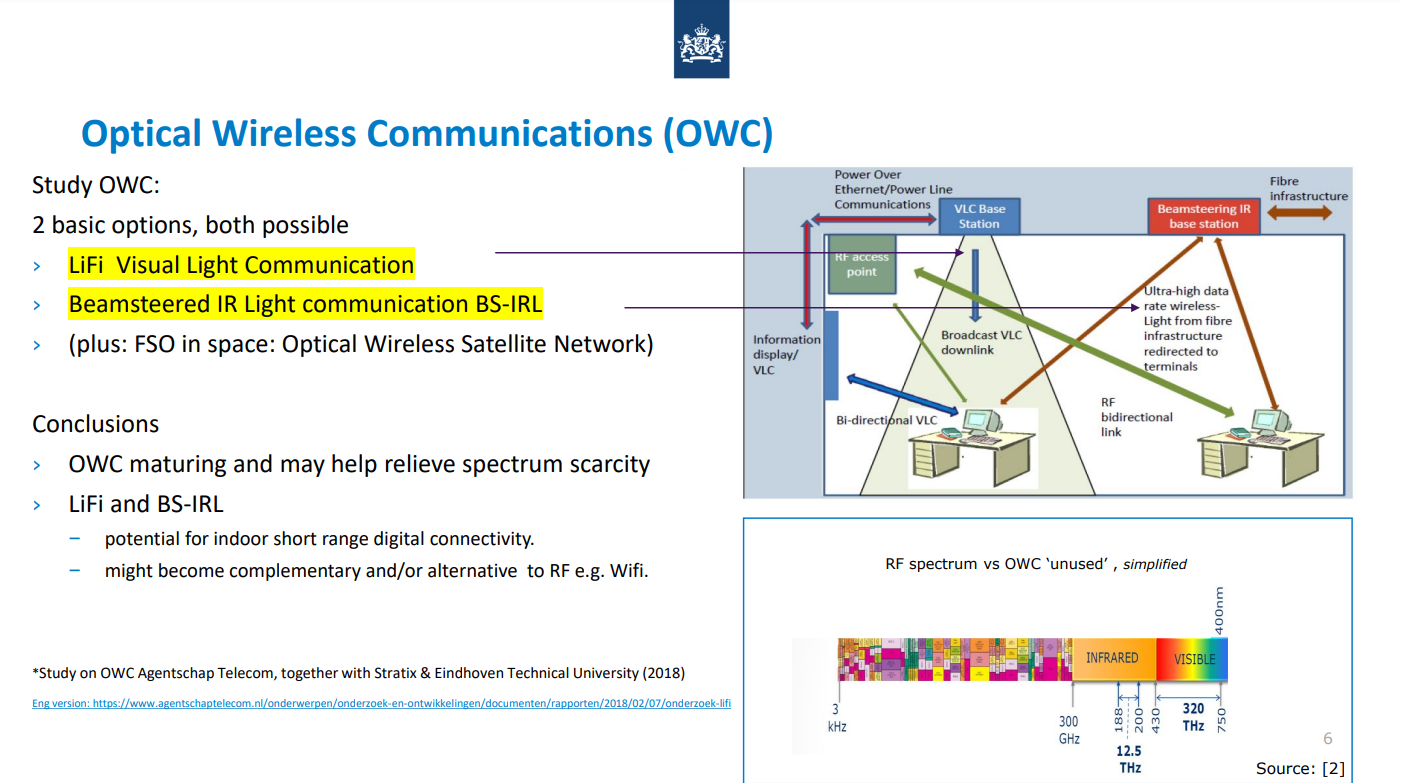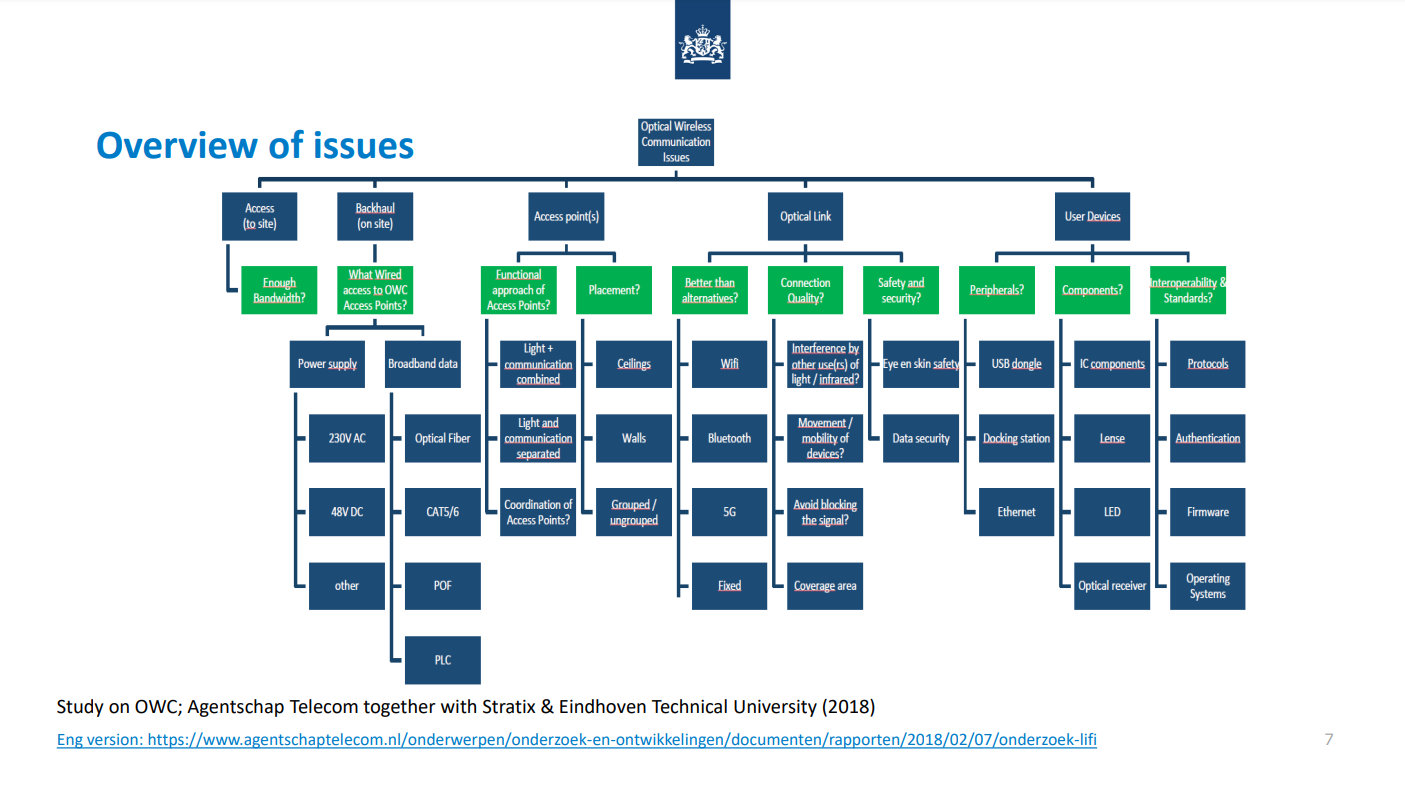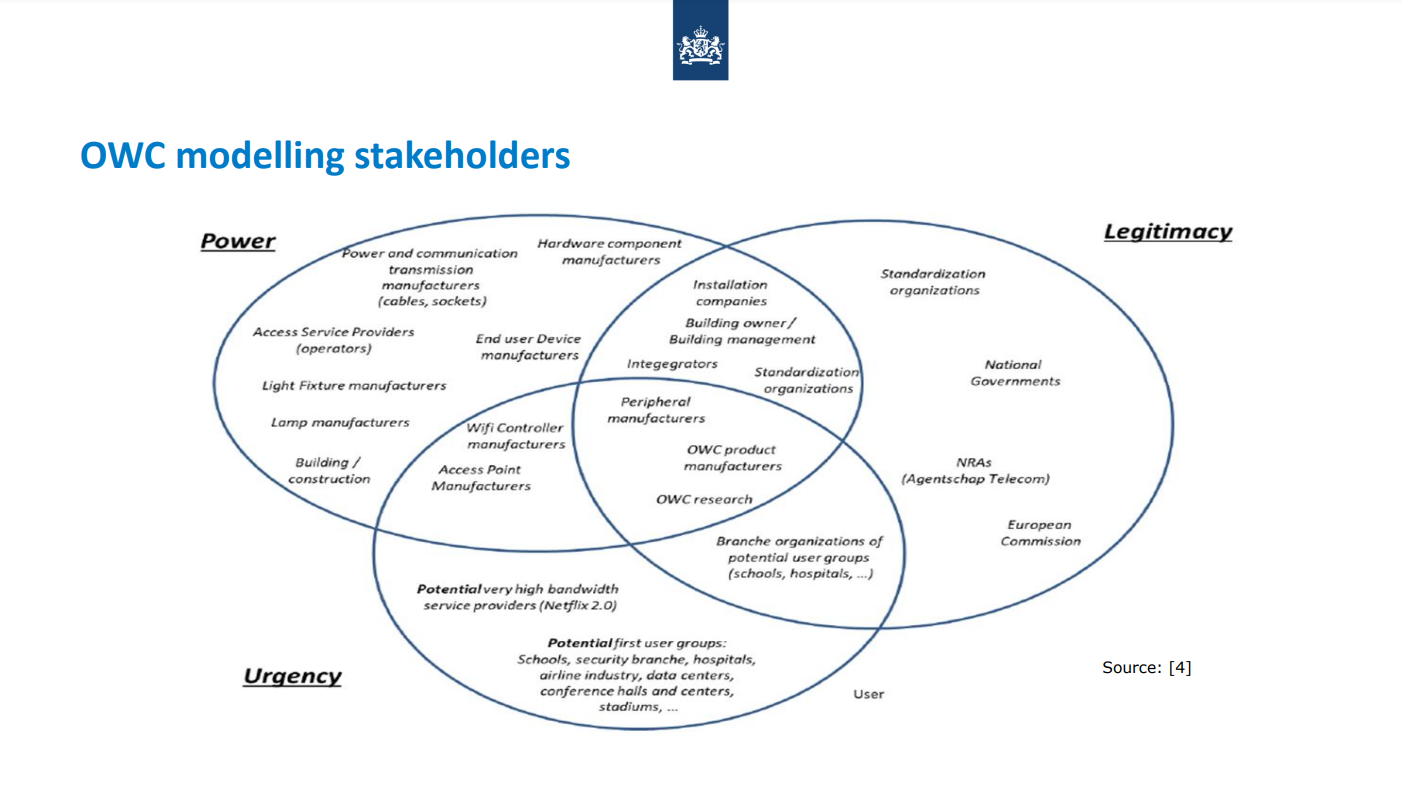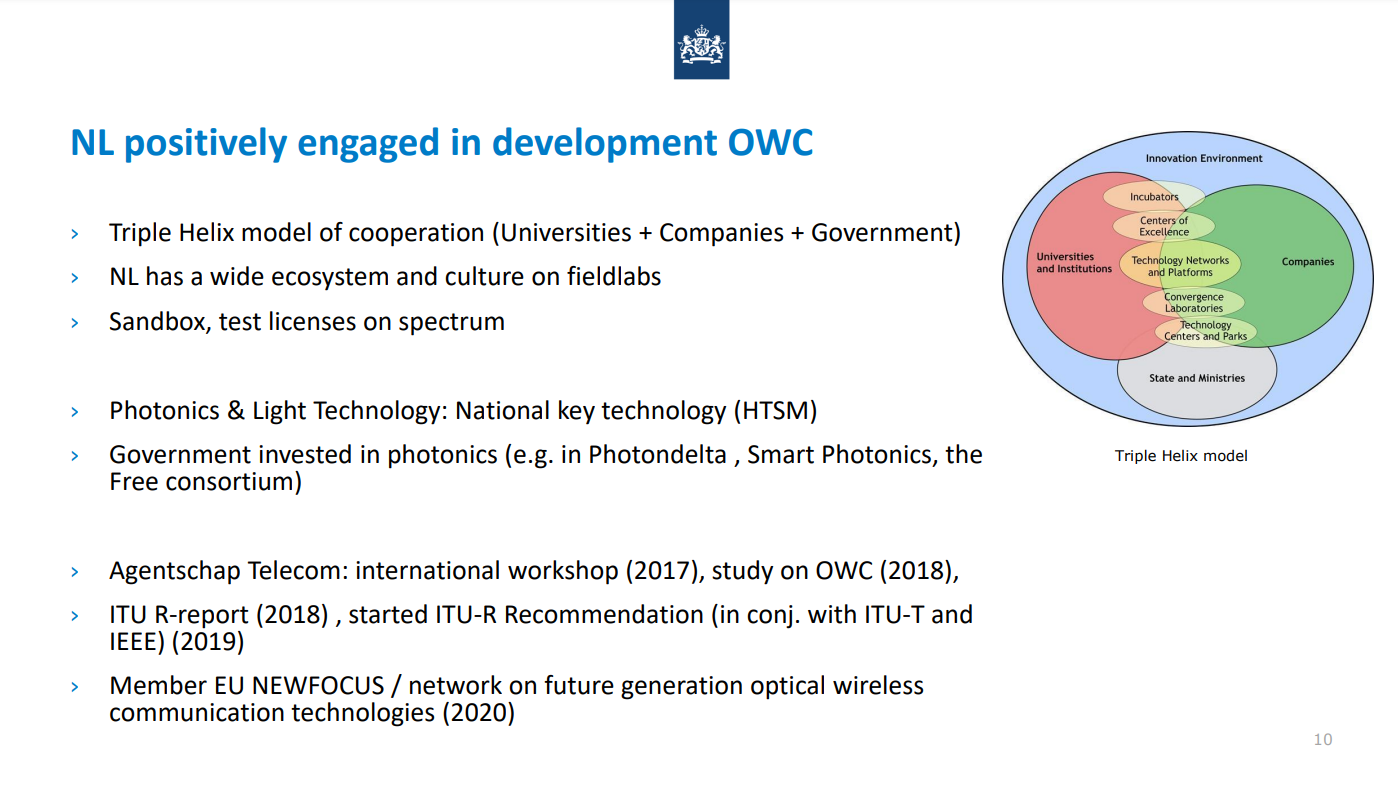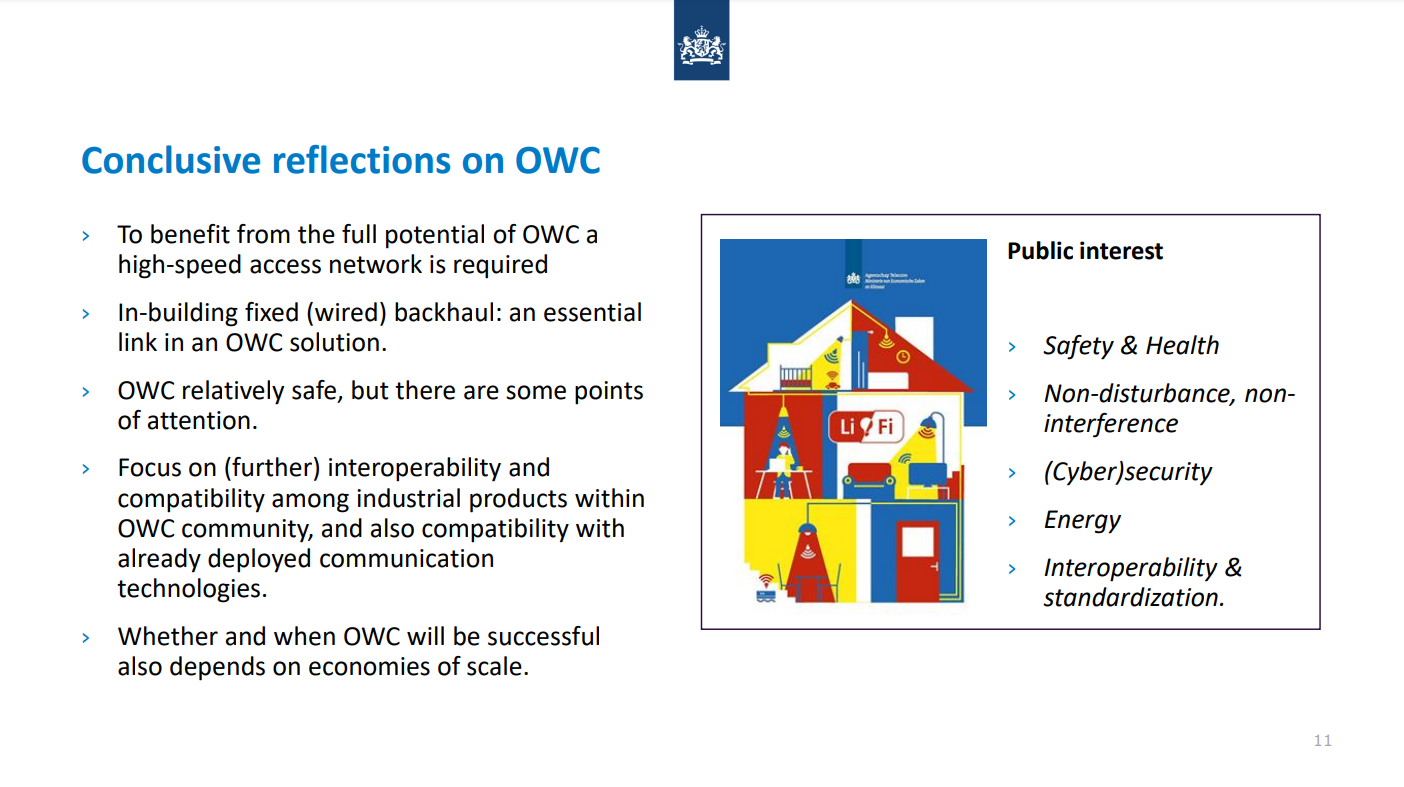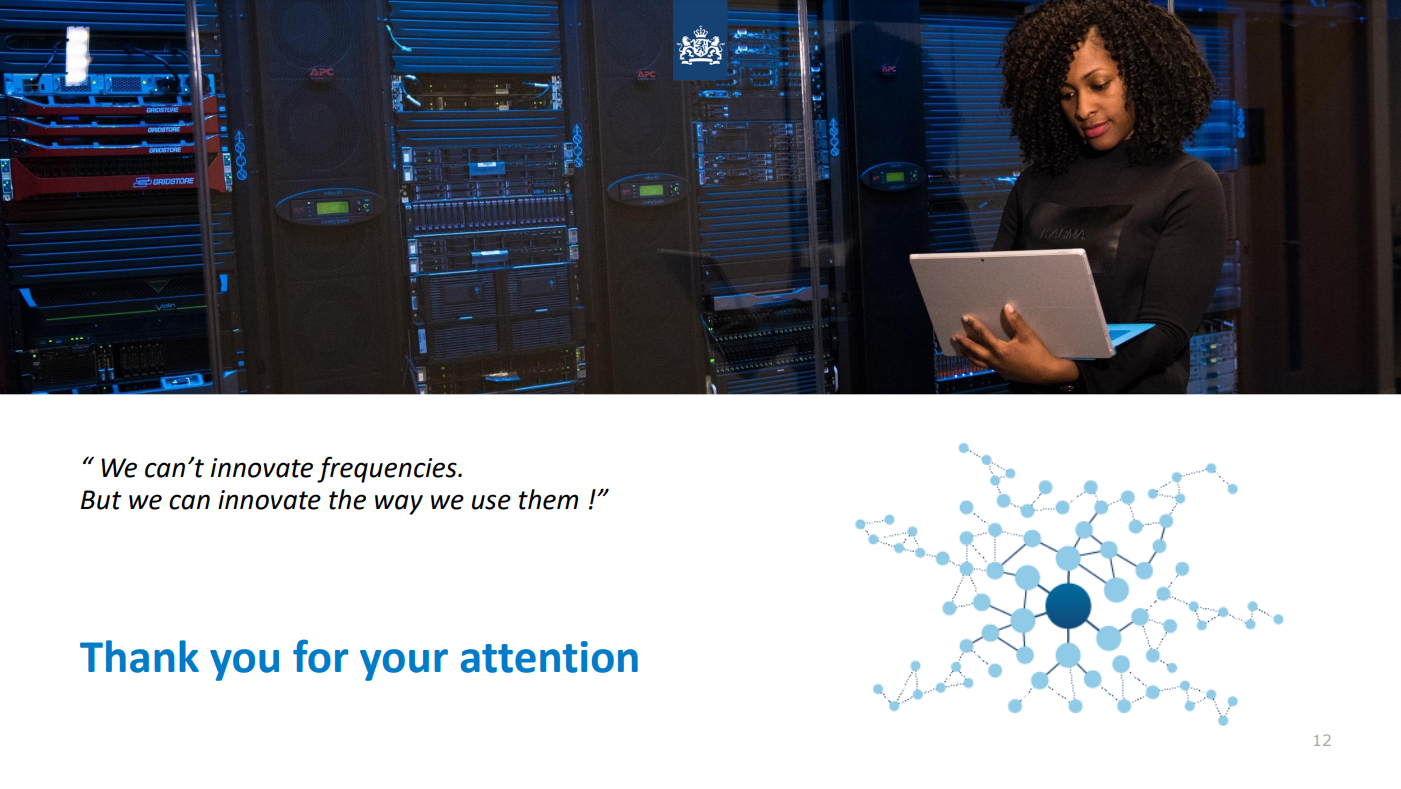Table of Contents
Li-Fi Conference 2021 - Recap Part 10 - Optical Wireless As A New Comfort For Telecom? A Regulator’s Perspective
Li-Fi Conference 2021
In our last article from our ONLINE Li-Fi Conference 2021 recap series, we discussed the duo presentation on Fully Leveraging LiFi Capabilities Through Enhanced Integration With 5G Core And Services delivered by Maximilian Riegel from Nokia. The conference was organised by the Jakajima, the global High Tech Conference organiser, and the Light Communications Alliance.
Jakajima, Matchmaker for Innovators in the high tech industry, organises many events, ranging from LiFi Technology industry trends, 3D Printing to the Internet of Things, from Unmanned Cargo Aircraft to Health Tech, from 4D Printing to Photonics and from Vertical Farming to Sustainable Materials.
The online Li-Fi Conference included live presentations from researchers, executives and industry specialists from pureLiFi, Nokia, Signify, Orange, Radiocommunications Agency Netherlands, Velmenni, OLEDCOMM, HomeGrid Forum and Weidmüller Deutschland.
In this last article recap series, we will talk about the presentation on Optical Wireless As A New Comfort For Telecom? A Regulator’s Perspective delivered by René Vroom from Agentschap Telecom. Before this, we will talk about Agentschap Telecom.
Agentschap Telecom
Agentschap Telecom is a Dutch government organisation that regulates and monitors the use of radio frequencies in the Netherlands. Telecom Agency is part of the Ministry of Economic Affairs and Climate. The organisation is located in Groningen and Amersfoort.
The service draws up guidelines and issues licenses for the use of frequency space and also has a monitoring task here. The service also monitors the trade in electronic equipment, tapping, data retention and the Information Exchange of Underground Networks Act (WION). With regard to trade in electronic equipment, the agency is responsible for verifying that equipment complies with the obligations of the EMC Directive and the R&TTE Directive. In addition, the service investigates and handles fault reports from citizens and license holders in the field of EMC† The WION regulates the exchange of information between excavation contractors, clients and network operators when digging in the subsoil.
The service was founded in 1929 as the Radio Control Service of the Staatsbedrijf der PTT (RCD) with its head office in The Hague. The listening station was located in Nederhorst den Berg . In the mid-1970s, the government decided to reduce unemployment in the northern provinces by spreading government responsibilities. The PTT Department of Cable and Connections Directorate (DKV), later + Radio (DKRV), was therefore moved to Amersfoort and the RCD head office was moved to Groningen. In 1982 regional branches of the RCD were opened in Zwolle for the north of the Netherlands and in Eindhoven for the south of the Netherlands. Nederhorst den Berg became the location for the Central Netherlands.
The Radio Control Service had several tasks, but was particularly feared by radio pirates, who code-named the service "the white mice". From 1976 to 1981, listening posts of the Special Radio Service (BRD) were integrated into the RCD. In 1989, KSR ( Coastal and Ship Radio ) was added, with its headquarters at Capelle aan den IJssel. When the PTT was privatized, the RCD was split off and placed with the Ministry of Transport, Public Works and Water Management and the name was changed to Operational Affairs Directorate, part of the General Directorate of Telecommunications and Post (HDTP). Later this name was changed to Rijksdienst voor Radiocommunicatie (RDR) and Telecom Division as part of the Transport, Public Works and Water Management Inspectorate (IVW). In July 2002, the service was transferred to the Ministry of Economic Affairs as an independent agency. In a reorganisation in 2005, they again opted for centralisation. Amersfoort now became the central location with Groningen as the head office. The local district offices in Zwolle, Eindhoven and Capelle aan den IJssel and the historic RCD fortress Nederhorst den Berg (NERA) were closed.
Agentschap Telecom is authorised to detect illegal broadcasts and to impose administrative fines. Much attention is paid to radio pirate broadcasts in the FM broadcast band. For the investigation, cars with radio direction finders are used and use is made of the nationwide measuring network of the Telecom Agency, which records the use of radio frequencies at all times. This proactive approach against radio pirates started with Operation Ether Flash in 2003. Previously, the agency only responded to complaints about interference. The fines for illegal use of FM broadcasting frequencies can amount to more than €15,000.
The above approach was evaluated until mid-2011, proved effective and was subsequently maintained. Most broadcasters without a valid license give up after a warning from the Telecom Agency. Previously (late 20th century) people got away with confiscation of the equipment and possibly everything attached to it, followed by a fine of a few hundred guilders. After that, the policy was made stricter to an immediate fine of €1300, which deterred some of the unlicensed channels. The government still thought this did not go far enough and wanted a system to permanently shut down almost all channels on this radio band.
Optical Wireless As A New Comfort For Telecom? A Regulator’s Perspective By René Vroom
René Vroom from Agentschap Telecom was the tenth and final presenter at the online Li-Fi Conference 2021. He discussed in his presentation the topic of Optical Wireless As A New Comfort For Telecom? A Regulator’s Perspective.
Below are some points discussed in this presentation.:
René Vroom started his presentation by saying the following:
“My view is of course a little bit different. We are a regulator and we are very much interested in optical wireless communications. So I will lead you through my presentations.”
CONTENT
“As a regulator, I will tell you a little bit about a handful of telecom, the Delta radio communications agency. I will talk about digitalization and developments in telecom, optical wireless for us with this new spectrum new technology and some conclusive reflections."
Agentschap Telecom
”AGENTSCHAP TELECOM for a safely connected Netherlands, we are a regulator and an authority on the digital infrastructure in the Netherlands and part of the Ministry of Economic Affairs and climate policy. And our mission is to improve trust in IoT and communication network devices in electronic applications. Roughly 400 employees in four areas and I will lead you in a few seconds through those four areas. It's about spectrum. We are doing regulating and law enforcement on Spectrum infrastructure, networking services, devices and IoT. We are an organisation like Ofcom in the UK or the Bundesnetzagentur in Germany or FCC in the United States. Out of these slides in the left box, you will find international harmonisation of all spectrum and that is of course also important for 5g Wi-Fi etc and we will come back later on how it will reflect to LIFI infrastructure and going to the right box, devices and IoT. We are dealing with some standardisation organisations, EU market access equipment, electromagnetic compatibility and EMF etc. So for us, it's important that whatever is going on through the market it is reliable, safe and secure.”
NL & digital connectivity
“About Holland very shortly, digital connectivity we see it from a nice to have to a must have digital connectivity leads to economic growth and social welfare and also with the COVID pandemic we have seen how important it is that we have digital connectivity everywhere. But we also expect quite some leverage effects from digital connectivity into other sectors like the agricultural logistics and so on. If you see here the DESI index from Europe, you can see the evidence from Europe. When it comes to connectivity, human capital use of Internet services integration of digital technology and digital public service in a country the DESI for Europe is roughly 52 and in Holland, we are in good shape with Denmark, Sweden and Finland on 70, 68 Something like that.”
Strategic developments
“Strategic developments which we see upcoming are still and it is not a surprise an increase in communication data transmission ongoing. For us as a regulator, we are very much busy on the 5G rollout ongoing we are thinking about beyond 5g and 6G is upcoming. But we see still and that is why we are so interested in new technology like LIFI radio spectrum is very much occupied and solutions are looked for. And we are looking at them in three different areas. One is to use the existing spectrum more dynamic and sharing. The other one is creating a higher efficiency on accessing existing spectrum with new technologies like 5G And you can think about edge computing and slicing. And the third option we are looking for is complete new technology on the new spectrum. And then we are coming to back to optical wireless communication. So that's the reason why we are interested in optical wireless communication. But also it's important that social impacts on telecom are becoming more and more important. And then you have to think about sustainability, health, privacy and data integrity and cybersecurity. And of course, as a country, we are not loosely coupled with the rest of the world and extremely important for us is the Europe digital strategy, which you can see here in the left box. And I will just shortly touch on the graph to the REITsright. You can see this is the retail mobile data used in Holland is going up from 200 billion in 2016, up to 1 trillion megabytes in 2020. So it's five times more in four years. And it's important also to notice that the main part is still used inside offices or inside buildings or inside houses. And then, of course, LIFI and I come back to that later is an option to use to accommodate this data transmission.”
Optical Wireless Communications (OWC)
“Optical wireless communication, we did a study already in 2018 on this together with the Stratics and the ICT of Technical University and basically, we have this spend up to two different basic options, LIFI as official light communication and beam stay at infrared light communication. You can see over to the right, you can see the blue field sea base which is LIFI and the other one is the red ones beams, the base stations pencil beams, which is, for example, sorry the icon in the red wall in the picture to the right. Also, it was already mentioned by some other speakers there is free space optics. The conclusions of that report are that optical wireless is maturing and may help relieve spectrum scarcity. And the next one is LIFI and certain beams like the infrared can become a potential for indoor short-range digital connectivity with extreme low latency and it might become also a complementary and or an alternative to RF like or eg on Wi-Fi. In the bottom right, you see a spectrum very much simplified. The radio spectrum is very much occupied. And as I said already in my intro, infrared invisible is hardly used for communication. So, there are I think up to 2600 times more spectrum available frequencies available than in the whole radio spectrum.”
Overview of issues
“We created in this report, and it is available with a link which I can send later on an overview of the issues which need to be solved or addressed. Going to the left, you see it's about access to the site and the backhaul on-site, you have to think about power supply, optical fibres. And this whole backhaul needs to be in place to make use of the LIFI qualities. In the middle, you'll see also the access points, where do you place them on the ceilings on the walls? How will you locate them? Will it be light or will it be a combination or will be separated this kind of issues needs to be solved? And then, of course, the quality of the optical link which you see more to the right then you have to think about is it better or is it complimentary? And we have already taken that conclusion at least you have to think about what is on Wi-Fi Bluetooth, 5G fixed what is already there? And how will these be fixed that and then, of course, there should be no interference with other communication devices. It should now also when you move it, should not immediately lose the signal or block the signal. And when it comes to safety and security, It's it's about eye and skin safety and also all data integrity and data security and the use of devices. Then I go to the complete right of this table, it's about interoperability and standardisation. So the protocols that authentication, the firmware everything have to be in place in the same study.”
OWC modelling stakeholders
“We have talked and also other speakers have talked about the ecosystem. And in this study, we have created a picture of the ecosystem, you see power, urgency and legitimacy. Legitimacy distributes at least the regulation part. Power is the ones who can create and Urgency is the one who can use it and buy it. And on the regulation side, it's about the standards, the rules and the regulations and the law enforcement. And of course, it’s important to see what is in the middle of those three circles. And then you'll see the companies or organisations that are important and overlapping are the building owners and the building management, the standardisation organisations, manufacturers, the access point manufacturers and the branch organisations, think about schools, hospitals, airline industries, conferences and so on. And again, we have to think about how we can get the data bandwidth also in houses and in offices and then we are coming back to the building owners and the building management.”
OWC regulations
“There are many regulations on equipment and devices in general, but coming to spectrum, this is above 300 gigahertz and we expect it to be non-regulated and or licenced exempt. The ITU will consider normally not up to or higher than 3000 gigahertz. So, that is, let's say kind of freedom books. But there is also radio equipment directive in Europe. And then you have to think about EMF, so the protection on health and ICNIRP electromagnetic compatibility, the efficient use of frequencies, and also as from 2024 onwards, cybersecurity. This radio equipment directive is only valid when the optical wireless devices include RF modules, eg for on and off switching or location or any other reasons. The EMC directive is here already right now for optical wireless and then you have, of course, General Product Safety and then condition on light density and eye safety and the low voltage directive. So, these kinds of things are to be considered and are important to check with also when you're producing these products.”
NL positively engaged in development OWC
“In the Netherlands, we are positively engaged in the development of optical wireless. In general, we have in Holland, the so-called Triple Helix model. And in this case, we are working very much together with the technical universities of Eindhoven centre, Delft and other universities and companies. In general, we have a wide ecosystem of field labs, and we are also able to create sandboxes and test licences on Spectrum. More specific the middle ones, photonics and light technology have become in Holland One of the national key technologies in the top sectors for knowledge and innovation. The government has invested in photonics like for example, in the photon Delta consortium, smart photonics as a company and also in a free Consortium, which is run by the TCU Technical University of Delft. So we have really invested money in this because we think this complete development should not be looked only upon the last part. So LIFI, with also the fibre, but also the integrated circuits which are then at the end complete chain of communication lines. So as our radio communications agency, we did a study on optical wireless in 2017. We did an international workshop, we created an ITU report in 2018. And we took the initiative for recommendation in ITU R in 2019. In conjunction with ITU t and I triple E. And last but not least, we have become members of the EU cost. New focus on the EU network on future generation optical wireless communications technologies. And also here together with the University of Eindhoven, John Paulina, who is also working with Signify, we are heading up for creating more usage of optical wireless.”
Conclusive reflections on OWC
“The benefits from the full potential of optical wireless or high-speed access network is required and maybe not the technique is the bottleneck anymore or soon, but the way the data gets there. So, an in-building fixed-wired backhaul is an essential link in the complete optical wireless solution and it should be installed as we are also installing water pipes, gas pipes and electricity in houses. For as far as we can see, optical wireless is relatively safe, there are some points of attention, for example, on lights, eyes, safety, and light density, but needs to be addressed in a good way. And further on. The interoperability between products in the optical wireless community needs to be guaranteed, or at least we would prefer that. But also the compatibility with other already deployed communication technologies like Wi-Fi and 5G. So whether optical will become successful depends on economies of scale, and the market picking up. For us, it's important that attention is paid to public interests like safety and health, that it is not disturbing and not interfering or creating interference with other devices. And cybersecurity is becoming more and more important. So we will look upon that one, as a regulator. Energy consumption is already mentioned, but that's an European policy. So take that into account. And last but not least interoperability and centralisation are extremely important.”
“So to conclude, we cannot innovate frequencies but we can innovate the way we use them. That's what we say. Thank you for your attention”.
You can also watch the full video presentation on the following YouTube link from Jakajima YouTube channel.
Li-Fi Conference 2022
The next Li-Fi Conference is coming up on the 28th of June 2022 between 10 am and 4.30 pm CET.
It is interesting to realise that lights that illuminate offices, homes, cars, factories, our streets and more locations also can connect us to data and hence power the growing demand for connectivity and speed.
At this conference professionals from all over the globe will gather together in order to share applications, ideas, new developments and ways to integrate Li-Fi in services, both for consumers and professionals.
This conference will be held Live and Online. The venue will be the High Tech Campus 1, The Strip 5656 AE Eindhoven The Netherlands.
Online tickets can be bought at the following link:
https://tikcit.com/register/61e002336d7fc4b6745cab83/
What is LiFi?
LiFi, also known as "Light Fidelity" is a wireless optical networking technology, which uses light-emitting diodes (LEDs) to transmit data. In 2011, professor Harald Haas made a LiFi demonstration at the TED (Technology, Entertainment, Design) Global Talk on Visible Light Communication (VLC).
VLC uses light as a medium to deliver high-speed communication like Wi-Fi and complies with the IEEE standard IEEE 802.15.7. The IEEE 802.15.7 is a high-speed, bidirectional, and fully networked wireless communication technology-based standard similar to Wi-Fi's IEEE 802.11.
How does LiFi work?
LiFi is a high speed, bidirectional, and fully networked wireless communication of data using light. LiFi constitutes of several light bulbs that form a wireless network.
When an electrical current goes through to a LED light bulb, a stream of light (photons) emits from the lamp. LED bulbs are semiconductor devices, which means that the brightness of the light flowing through them can change at extremely high speeds. The signal is sent by modulating the light at different rates. The signal can then be received by a detector that interprets the changes in light intensity (the signal) as data. Also when the LED is ON, you transmit a digital 1, and when it is OFF, you transmit a 0.
LiFi Benefits
The primary benefits of LiFi are as follows:
• Security: Provides entirely secure access. Where there is no light there is no data.
• Safety: Does not produce electromagnetic radiation and does not interfere with existing electronic systems.
• Localisation: Allows localisation due to the small coverage area of LiFi access point - localisation can be used for very precise asset tracking.
• Data density: Provides ubiquitous high-speed wireless access that offers substantially greater data density (data rate per unit area) than RF through high bandwidth reuse.
Credit to Oledcomm
LiFi Applications
LiFi can be used for so many applications and the list is increasing every year. You can read our updated list of Li-Fi applications at the following link:
Credit to pureLiFi
In conclusion, if you are also interested to hear more information about the OWNII Coin or enquire about LiFi devices such as the LiFiMax and Trulifi, you can contact us through our chatbot or by sending an email through our contact us form. If you enjoyed this post and would like to hear more updates about LiFi technology, subscribe to our newsletter. Don’t forget to subscribe to our social media accounts. You can also join our Telegram group about LiFi technology on this link:
https://t.me/joinchat/FMzOmsEKyJFrU6Af






